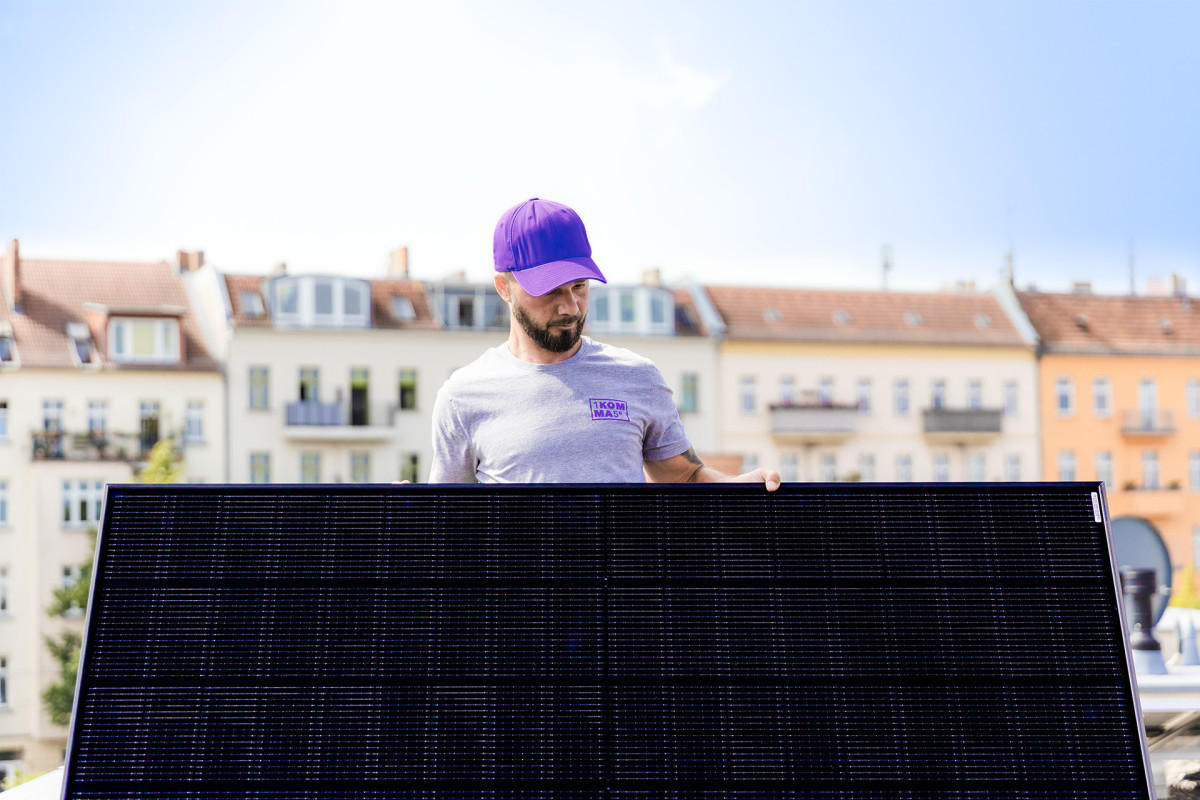As renewables grow, Germany must jumpstart flexible electricity consumption – start-up unicorn
The climate tech start-up 1KOMMA5° offers innovative energy management systems, combining the installation of solar panels and heat pumps, storage and charging infrastructure with software to optimise the use of electricity. The company is a pioneer in offering intelligent energy systems for households, and is active across Europe. The start-up was valued at over one billion U.S. dollars within two years of its founding in the summer of 2021, making it one of Germany's few so-called unicorns.
***Please note: This interview is part of a series on how electricity markets are evolving to support the energy transition. Find the full deep dive here.***
Clean Energy Wire: What is the idea behind dynamic electricity tariffs?
Jannik Schall: Right now, especially in Germany, consumers pay a fixed rate for electricity whether they use it at midnight or in the afternoon. However, wholesale electricity prices fluctuate throughout the day, depending on supply and demand. A typical dynamic electricity contract offers a different price for every hour of the day, published one day in advance. This price is based on the wholesale electricity market, plus local grid fees and other taxes.
Wherever you have a high penetration of solar and wind, you often see negative electricity prices, or at least zero, in the wholesale market. Dynamic electricity tariffs give end consumers access to these fluctuations in wholesale electricity prices: they can directly benefit from times of renewables oversupply.
The cheapest electricity available is also the cleanest. The correlation between electricity price and CO2 emissions is almost perfect. This is mind-blowing because it means that, from a consumer perspective, doing the right thing from an economical perspective is also the right thing from an ecological perspective. Of course, volatile pricing does not exclusively mean you can benefit from low prices – you are also exposed to the risk of running into high price peaks.
How do dynamic electricity tariffs work in practice?
First and foremost, you need the ability to shift your electricity consumption and make sure it happens during times of low prices. The next step in this flexible power consumption is combining a dynamic contract with so-called energy management: a tool which optimises energy consumption.
This is the only way a dynamic contract really makes sense. For example, if wholesale prices are around zero in the middle of the night, it would be difficult for a customer to benefit from this, as they would have to get up to turn on their washing machine or charge their car. With a smart energy management system, this process is automated.
The big potential of dynamic contracts comes when you can control your loads, add energy management and automate the use of electricity – that is when the beauty really happens. This is especially true for households with heat pumps and electric car chargers, and people with solar panels and batteries who can store electricity when prices are low and use it when they are high.
We are going to have a huge problem with the energy transition if we continue with business as usual.
Why is it important to implement dynamic electricity contracts?
We are going to have a huge problem with the energy transition if we continue with business as usual, simply because there will be times when renewable energy is available in abundance: when it is going to flood the grid and we will have to shut it down. And there will be a different time of the day when there is no renewable supply and electricity is expensive.
We are seeing negative price events more and more often because of the higher penetration of renewables. Millions of solar photovoltaic systems feeding electricity into the grid at the exact same time without adjusting consumption is something that makes absolutely no sense. All across Europe, grids are struggling with this – renewables have to be curtailed because of grid congestion. This is ridiculous and could easily be fixed.
The way the German government is trying to react is by building more hydrogen-ready gas power plants, but the cheapest way to deal with this is to make sure consumption follows production. This is a fundamental change, and dynamic electricity contracts are part of this.
We can build batteries and the like, and we have to make sure that renewables become available more constantly, but the easiest and most affordable way to make the most of renewables is to ensure demand follows supply, and not the other way around. There is huge potential for that already today. This is paramount and it is the only way we are going to solve this.
In Germany, the requirements for the process of installing, registering and getting a smart meter running are very complex – we need regulatory changes.
Utilities in Germany will have to offer dynamic electricity tariffs from next year – do you think they will take off?
I don't think there's going to be an explosion of dynamic tariffs in 2025 because of this new obligation. Yes, we're going to see more and more of them, but typical utilities haven't found a way to make money with this. For them, it is a threat rather than an opportunity.
Most importantly, Germany is still struggling with the smart meter rollout. Only around two percent of consumers have a smart meter – it is one of the only European countries that has not figured it out yet. In Sweden, uptake is around 99 percent, and it is similarly high in Denmark.
In Germany, the requirements for the process of installing, registering and getting a smart meter running are very complex – we need regulatory changes. There are a few initiatives already on the way, but we need much more.
What do you think would broaden adoption?
What we need for broader adoption in the German market is reducing bureaucracy in getting the smart meters running. Customers also need a wholistic offer which bundles the smart meter part and dynamic energy contract with an energy management system.
Our software, for example, maximises savings potential. If you put everything together – solar generation, battery, connection to the wholesale power market – our customers had an effective electricity price of below 7 cents per kilowatt hour over the past three months in Germany. This includes everything: taxes and fees and the production costs for the solar electricity as well.
Access has to be easy: you need to show customers the advantages and make sure it is fully automated. We like it when our customers pull up our app and they look at the price curve and they see what the optimisation did, but they don't necessarily have to do that. It is extremely important that it works without any action by the end consumer.
If it works out, what would the future electricity system look like?
Right now, there is very little visibility over what is happening within the grid. There is very little data available. But generation and consumption data could be better connected, and have access to data from the grid too. Maintaining a stable grid would then be automated too.
The electricity system of the future will have three major inputs: the electricity price, grid capacity, and consumption. Millions of assets can make decisions based on that.



